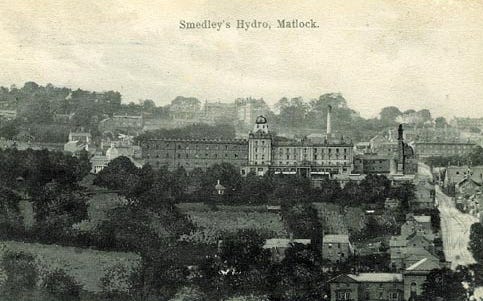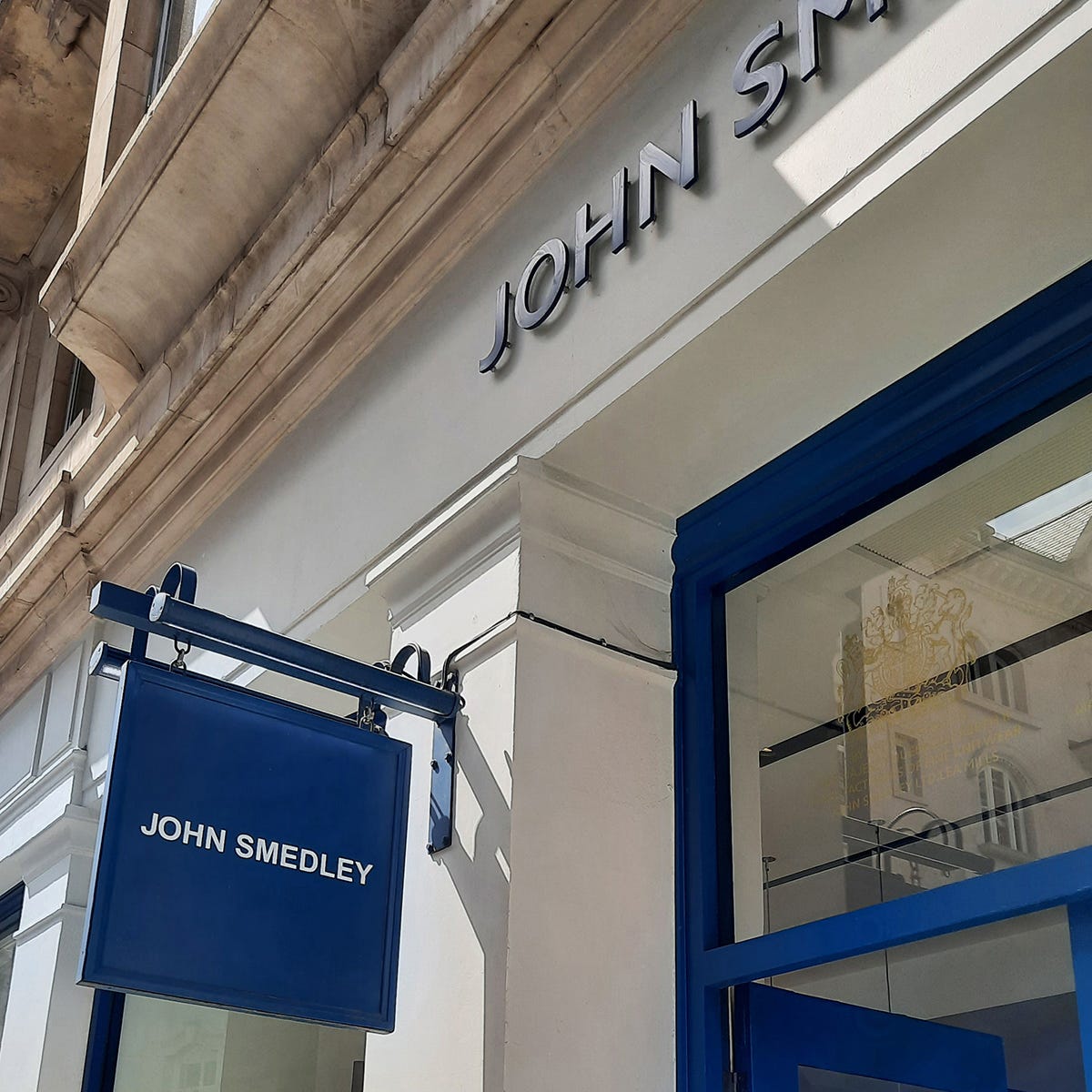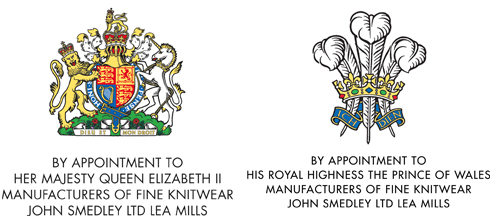For over 240 years, the villages of Lea, Dethick and Holloway and the surrounding local landscape, have been dominated by the presence of a textile mill. Operational by the start of 1784, the mill began its working life spinning cotton with generations of the Smedley family, working with tireless energy and determination to convert the machinery to also spin wool.
By the 1830’s and under the leadership of John Smedley II, the John Smedley mill was very successfully twisting fine quality merino yarn and manufacturing newly fashionable items of knitted woollen underwear. John Smedley’s undergarments became famous for their quality and luxury and legend has it that the ‘long-john’ was named after him.
John Smedley II was a deeply religious man and an enlightened employer for his time. He continued to expand the mill and to purchase new, mechanical knitting machines as the 19th century wore on and as the demand for his quality underwear increased. He also began a second career in alternate medicine, being an ardent proponent of the ‘water-cure’’ and in 1853, he established what became the famous ‘Hydropathic Hotel’ in Matlock. By the time of his death in 1874, ‘Smedley’s Hydro’ was treating hundreds of patients a year and the John Smedley brand & mill were a great success.


John Smedley II had no children and he left both the Hydro and the mill to a cousin, John Thomas Marsden, who took the name Marsden-Smedley. Tragically, only a year later in 1875 and at the age of 33 years, he died, probably as the result of a riding accident. The company was held in Trust until his eldest son, John Bertram, came of age. During those fourteen years, the company was run on his behalf, by a board of Trustees and the existing managers Robert Wildgoose and John Broome. Together, they continued the tradition of manufacturing quality garments and created new styles, such as the ‘combination’, an all-in-one under-garment. In 1876 the company registered the ‘Jay Bird’ Trademark, which became synonymous with the brand and installed ‘Cotton’s Patent’ fully-fashioned knitting frames, worked initially by steam and later, by electricity.
John Bertram Marsden-Smedley inherited the company on his 21st Birthday in 1889 and found himself at the head of a successful hosiery and spinning business, employing over 1,000 people. He set about purchasing the mill from the Nightingale Estate, which he accomplished in 1893, creating a Limited Company in the same year. He led the company through the First World War, taking contracts to produce army clothing. Like John Smedley II before him, he put up new buildings and invested in the latest technology – not least during the 1920’s and 30’s, when, despite the Depression, he kept his workforce employed by expanding the factory. During the 1930’s, his design team created ranges of leisurewear, sportswear and outerwear in addition to the ever-popular underwear designs. This period saw the emergence of the three-button polo shirt which has been in production ever since. The company also broke away from the large commercial wholesalers and opened its own showroom at 24, Brook Street, London in 1932 and recruited a salesforce to sell Smedley goods to quality stores both in the UK and abroad.
During the Second World War, production was once more almost entirely taken up with military contracts and afterwards, Mr Marsden-Smedley (then in his 80’s), took the decision for outerwear production to cease, except for the three-button sports shirt, sold to the US Market. The company therefore returned to underwear manufacture but also developed a range of nightwear, sold throughout the 1950’s and early 60’s.
After the death of John Bertram Marsden-Smedley in 1959, the company had to respond to societal shifts and changing fashion. New synthetic fibres had become available and were popular, hemlines were shorter from the 1960’s and these factors, together with the introduction of central heating in the following decade meant that the underwear market was diminishing. The Directors responded to this challenge, by the creation of a range of men’s outerwear, adding crew, ‘V’ and roll-neck sweaters (styles made famous by film stars such as Sean Connery and Marilyn Monroe) to the already classic three button polo shirt, re-launched as ‘Isis’ in 1971. The Directors also took the decision to remain faithful to John Smedley II’s vision, using natural, luxury fibres. The company expanded production by establishing satellite factories at Clay Cross, Tibshelf and later, Armthorpe near Doncaster, where garments are still hand-finished. In addition to manufacturing outerwear, the company continued to create yarns for other manufacturers: an important part of the business until the demise of the UK knitwear industry in the 1990’s. The company ceased commercial spinning in 2003.
In the 1980’s and 1990’s, John Smedley began to collaborate with young British fashion designers such as Vivienne Westwood. Working with these bold, young creatives resulted in the decision to include contemporary, seasonal fashion collections for both men and women alongside the traditional knitwear designs which had been made since the late 1960’s. This period also saw the company winning a number of Fashion Industry Awards. The Millennium saw the opening of the first John Smedley retail store at 24, Brook Street, Mayfair, London – shortly followed by an online store. Other London stores followed including 55 Jermyn Street on March 10th, 2016, John Smedley also has dedicated shops in Tokyo and Kyoto and exports to over 26 countries worldwide.
In 2014, the company appointed its first marketing specialist to grow the John Smedley brand. As a result, the profile of the company has been raised and its reputation forged as the manufacturer of ‘the world’s finest knitwear’. The company participates in London Fashion Week, London Craft Week and Wool Week and has been awarded two Royal Warrants. (HM Queen Elizabeth in 2013 and HRH Prince of Wales in 2021). Collaborations with new young fashion designers such as Phoebe English, Holly Fulton and the artists of Into Art, have seen John Smedley knitwear reach new audiences. The alignment of the brand with the theme of ‘craftsmanship’ has opened the door to interesting work with craftsmen and women working in radically different areas, such as ceramics, beekeeping, and carpentry. Sponsorship and mentorship have been awarded through the Queen Elizabeth Scholarship Trust (QEST), to stone carver Zoe Wilson and commissions have been given to a series of professional artists and craftspeople for sculptures, installations and items for sale through the London shops.


The company has celebrated its 200th, 225th & 235th anniversaries, the 225th resulting in the launch of an archive project to ensure that the heritage of this remarkable company, which includes a collection of over 13,000 knitted garments, is preserved. In 2019, a Charitable Trust was created to take this forward. Whilst a museum, to present the story of knitted fashion, is being planned, the archive acts as an interface between the company and its shareholders, education and heritage institutions.
The company continues to be family owned and the Managing Director is the 8th generation at the helm. Planning its 240th anniversary in 2024 and still based in a mill built in 1784, John Smedley employs around 300 skilled craftspeople who are proud to work for this company, now almost unique in producing luxurious, designer knitwear entirely in Derbyshire and South Yorkshire.








.jpg)
.jpg)
